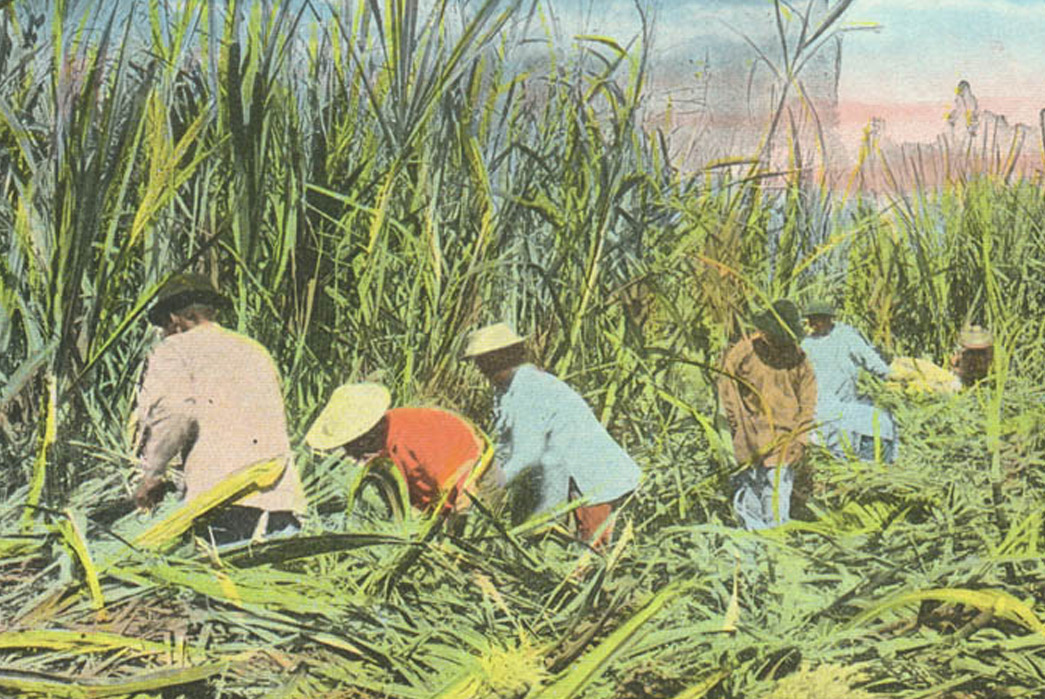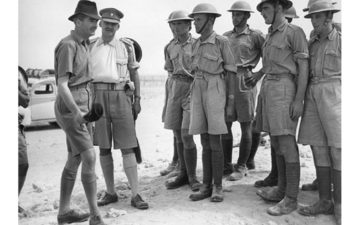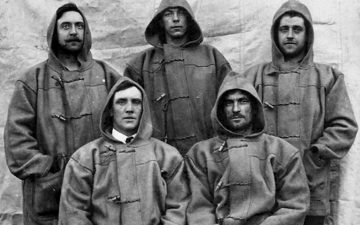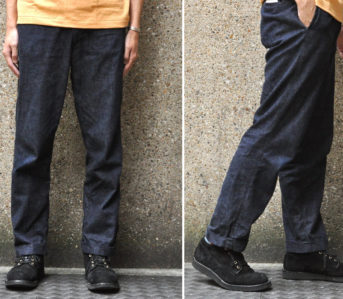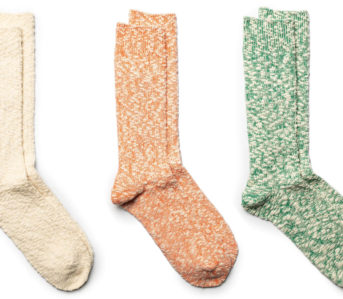It’s winter in Maui. As surfers flock to Hawaii to catch the swells crashing on northern shores, your work enters a sea of rolling, purple-and-green sugarcane. The harvest season is about to wrap up.
Warm breezes carry a smoky trace from nearby burnt fields—fires were set regularly during the season to burn off extra leaves and other foliage. Even with winter approaching, the Pacific winds are still balmy. To keep the sun and soil off of your back, you pick a garment that is as cool as it is durable: the storied palaka.
Raising Cane

This 1960 Kodachrome shows the Kilauea volcano erupting. Hawaii was created–and continues to grow–by molten rock. Image via Shorpy.com
While sugar cane has been a part of native Hawaiian culture for about 1400 years, the palaka arrived in more recent times with commercialized production. There are two major cultural epochs of history in the islands; the first is the story of those that have thrived in the archipelago for centuries, while the most recent is the modern era of forced Euro-American colonization and displacement of the native peoples.
Prior to any human inhabitants, a series of eight major volcanic islands, with minor islands and shoals sprinkled throughout, was formed by undersea volcanoes. Like the mighty calderas that created them, the population and demographics have experienced incredible changes.
In 1848, Kamehameha III, the native king of Hawaii initiated the “Great Mahele”, which was intended to solidify native land rights (native Hawaiians had no concept of land ownership), but ultimately had the opposite effect in allowing foreigners to own Hawaiian land. This kicked off continuous sugar production on an international scale thus fostering the palaka as a practical garment and ultimately the overthrow of the Hawaiian kingdom and annexation by the United States.
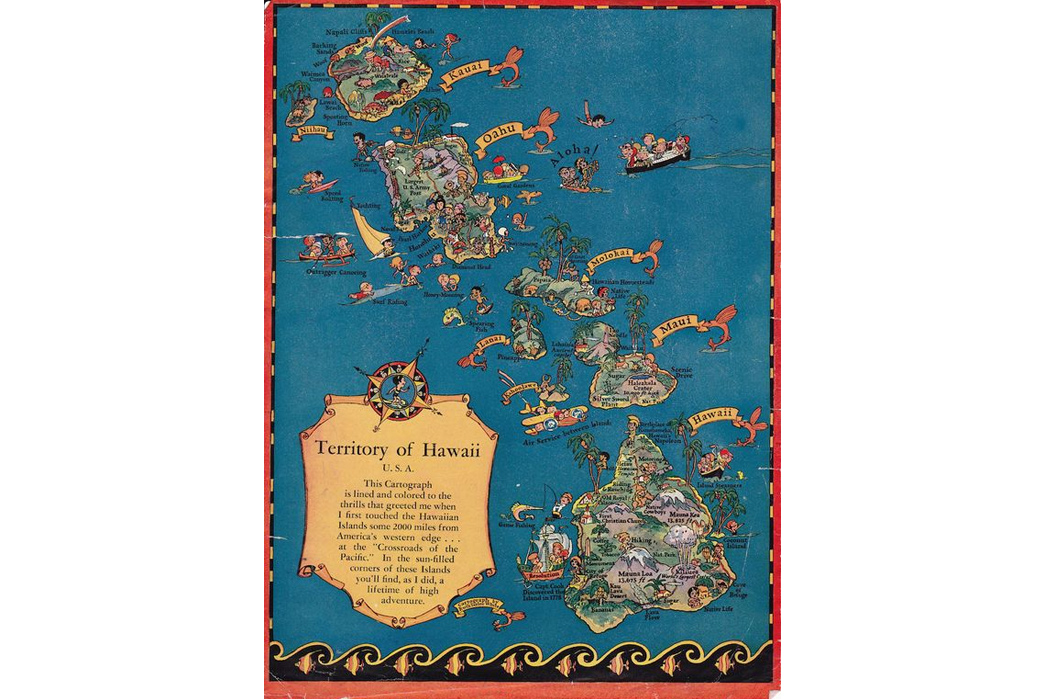
A 1930s map of Hawaii. Image via Pentax/Pinterest.
Cultural and Industrial Crossroads
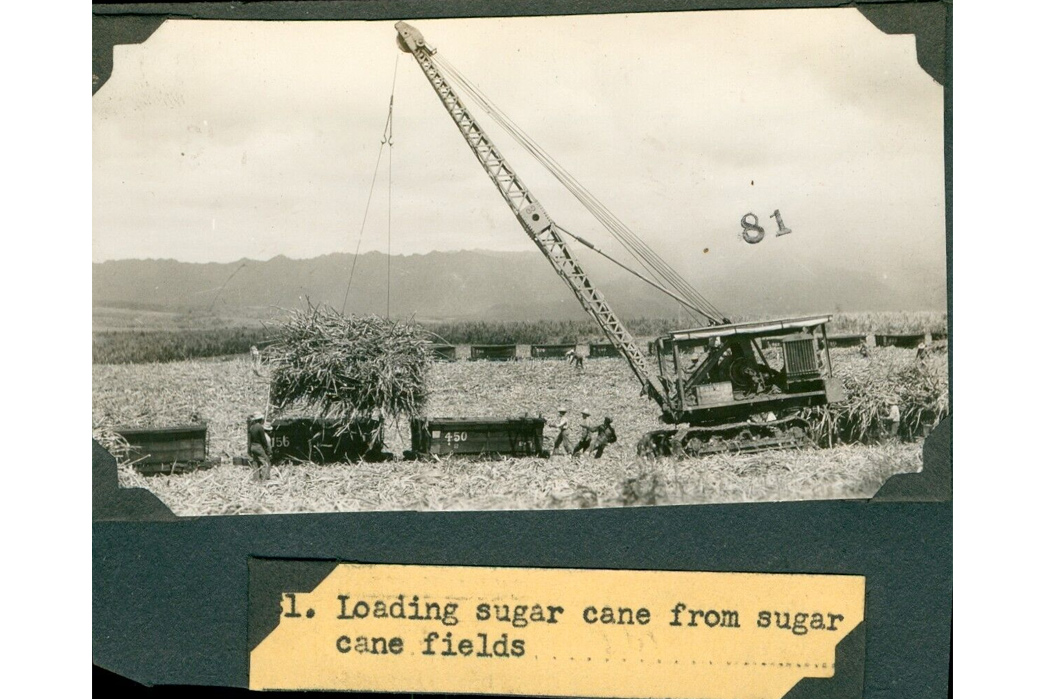
Cut Hawaiian sugar cane being loaded into railcars in this 1940s photo. Image via montanagifts2/eBay.
The British were the first European arrivals and were commanded by Captain James Cook. The Russians then arrived and established a fort to protect their economic interests. Immigrants from Portugal and South American countries came to ply their sugar cane and cattle herding prowess as the Americans showed up in force, themselves an amalgamation of immigrants.
A prime example of a newly-minted Yankee was William Matson, Swedish by birth, who ventured to Honolulu, Hawaii via San Francisco and established the shipping juggernaut Matson Navigation Company.
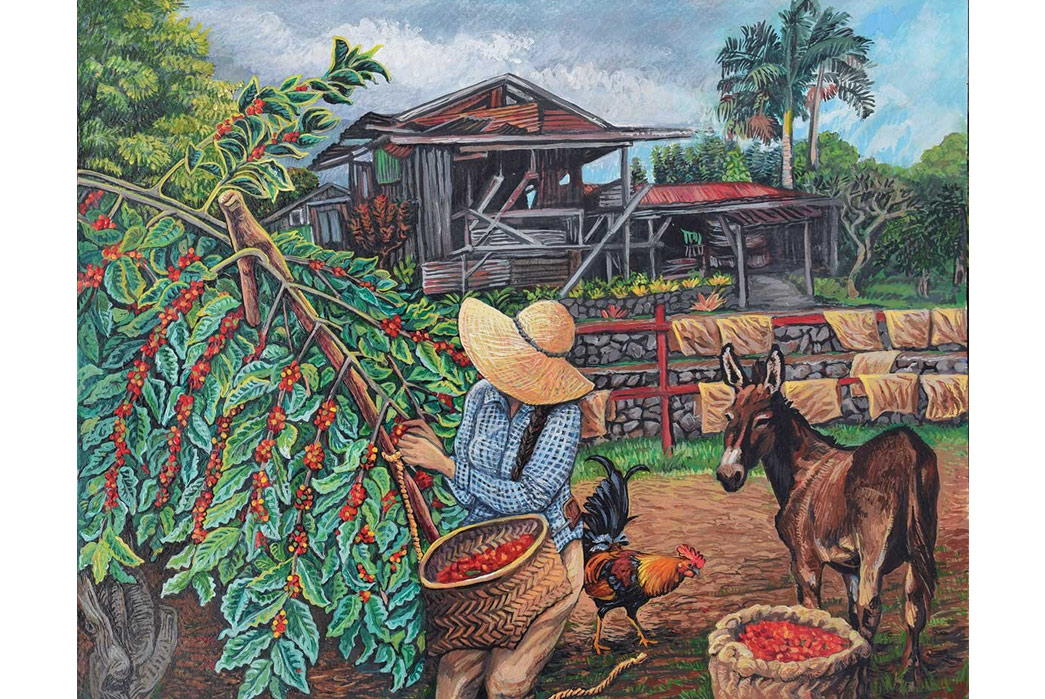
This painting depicts the harvest of Kona coffee, complete with palaka. Image via Kona Coffee and Tea.
While seagoing trades remain vital, it was agriculture that shaped the island landscape. Hawaiian sugar, now extinct in its bulk commercial form, was a massive industry. Beef, coffee, pineapples, and other tropical products were also ripe for a growing American market with West Coast ports.
Laborers and entrepreneurs from China, Japan, and the Philippines arrived en masse during the nineteenth and twentieth centuries. “Issei,” or the first wave of Japanese immigrants, played a significant role in bringing Eastern culture to Hawaii. They were joined by other ethnic groups, especially in the twentieth century, from Korea, Vietnam, and a plethora of Pacific islands.
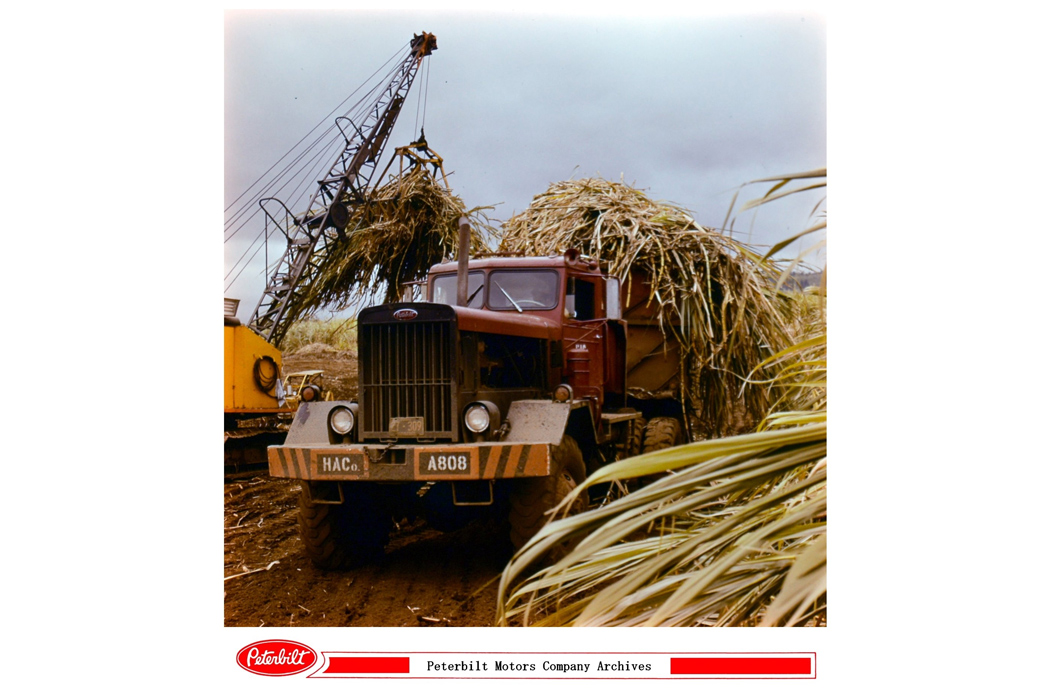
After World War II, technology continued to mold the islands as trucks became the preferred way to move sugar cane from field to mill. Image via Peterbilt/Facebook.
What is Palaka?
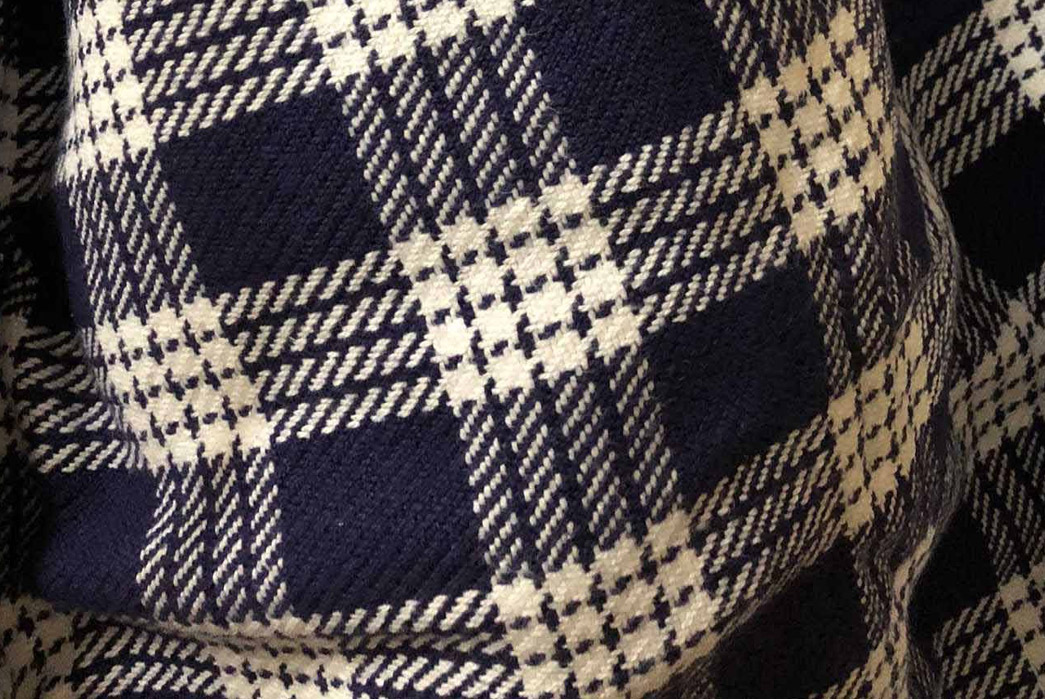
Classic palaka in its navy blue glory. Image via Linda Macdonald/Handwoven.
The modern answer for palaka is this: it’s a breezy cotton that has a two-tone check pattern. The twill weave of the cloth, with some yarns running diagonally, lends itself to keeping cool while working up a sweat. Some sources call it “Hawaiian denim” because the weave is similar but more coarse.
Semantics aside, the classic color is dark blue-and-white, and sometimes red-and-white, though there are plenty of options today to suit your palette. The catch? Classic palaka fabric–and thus the shirts–are woven with colored yarns rather than printed to achieve the trademark check. The Hawaiian islands are home to a garment cottage industry that not only turns out palakas but also some classic “aloha shirts” with printed designs, especially floral motifs.
Some heritage businesses, like the Ulupalakua Ranch Store on Maui, sell palaka shirts that have been embroidered with their branding.
History and Evolution
Like so much of Hawaii’s culture, inspiration for the palaka came from the sea. Colonizing British sailors in the eighteenth and nineteenth centuries wore loose cotton clothing in warm environments that featured cotton prints, especially red-and-white.
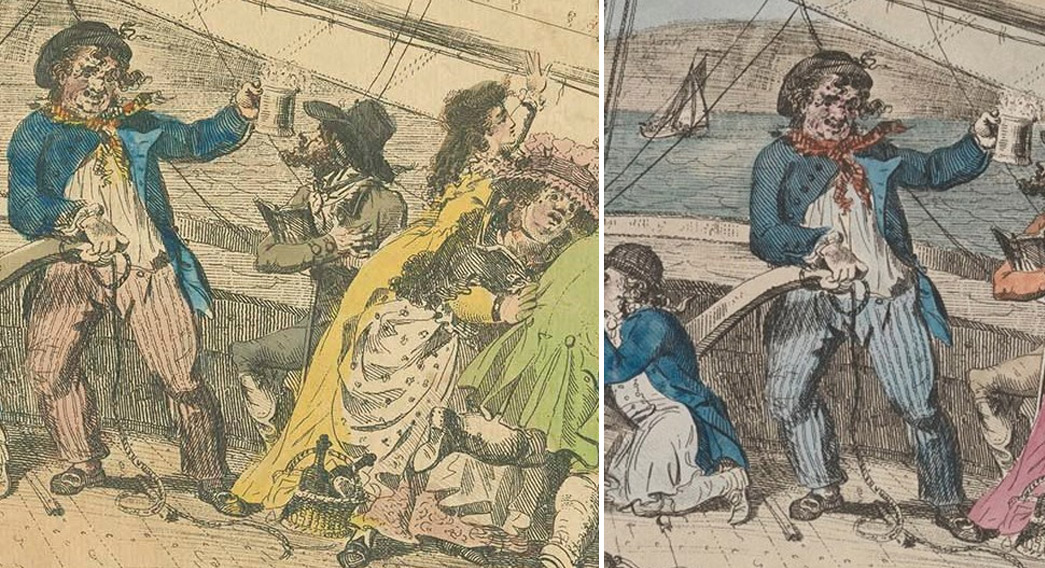
Two versions of Isaac Cruikshank’s Voyage to Margate with two distinct colors of presumed cotton-print trousers. Image via British Tars: 1740 to 1790.
During Hawaii’s plantation era (1885 to 1941), sugar barons needed an affordable option to supply a growing workforce. This cheap but colorful cotton fabric was a business-savvy choice given the climate. Company stores, similar to those found in industrial towns throughout the mainland United States, were also opened to stock food and dry goods. The Issei were already familiar with similar fabrics from their old homeland.
One Word, Several Meanings
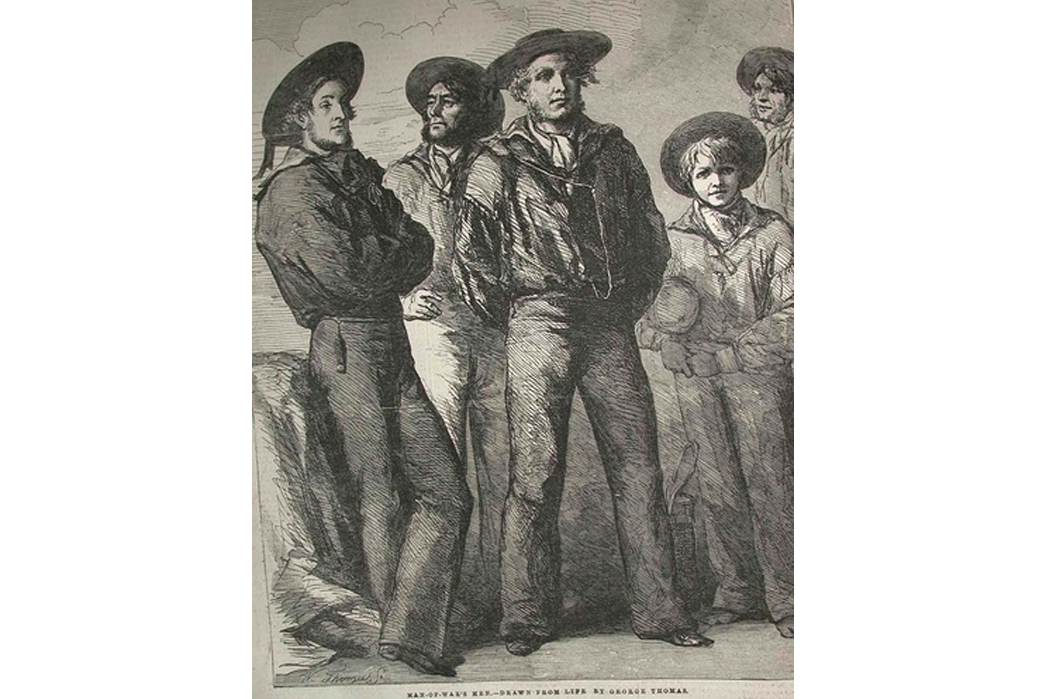
The quintessential look of mid-19th-century sailors. Image via Maritime History from Aloft.
Barbara Kawakami, a former dressmaker on a plantation, is an authority on island clothing. She wrote an essay titled “Japanese Immigrant Clothing in Hawai’i 1885-1941” and postulates that Hawaiians used the word palaka to describe long-sleeved sailor’s garments. The term was transliterated from the English frock.
This is to say that palaka referred to a broad category of garments, and not a specific color, pattern, or weave. British and American sailors arriving on the Hawaiian islands were keen to barter with cooling clothing.
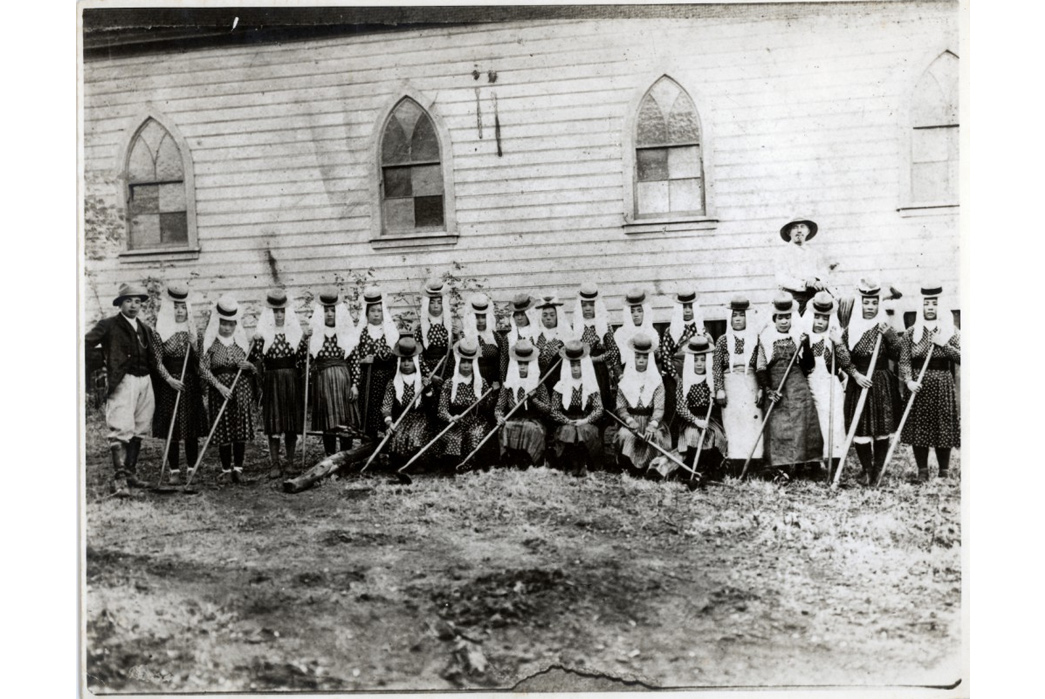
Japanese immigrants in Hawaii wear some traditional clothing from their mother country. Image via University of Hawaii.
Even though the modern palaka had yet to take shape, cotton fabrics arrived in local stores. Japanese settlers had a distinct take on work clothing, preferring to fashion gobanji (plaid or check) into outerwear like work jackets. The finished garments were reminiscent of the yukata, or unlined printed cotton kimonos worn in Japan.
The Rise of Arakawa’s
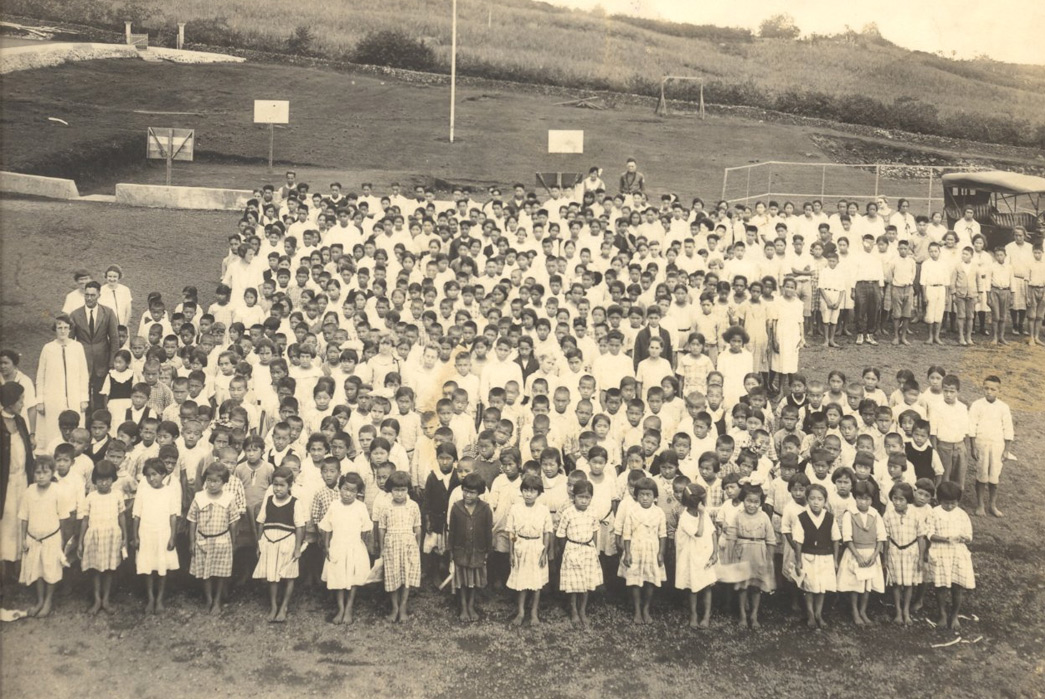
A 1930s photo of schoolchildren–several palaka shirts and dresses are visible in the first two rows. Image via Kona Historical Society
Prior to World War II, the palaka had gained such popularity that islanders had one in their closet. No longer just for work, the shirt became the dress of choice for play, parties, and even sports. This is thanks in big part to Zempan Arakawa.
According to his son, Zempan immigrated to the island of Oahu in 1904 to work in the cane fields. The enterprising Issei from Okinawa saved up enough money to purchase a sewing machine, which he used to make lunch bags and other items that workers wanted. Zempan then took an interest in shirt patterns. The palakas proved themselves to be a success as a fledgling tailoring business grew into, “…the largest rural department store in Hawaii,” as reported by the Kona Historical Society.
Paniolo: Island Cowboys
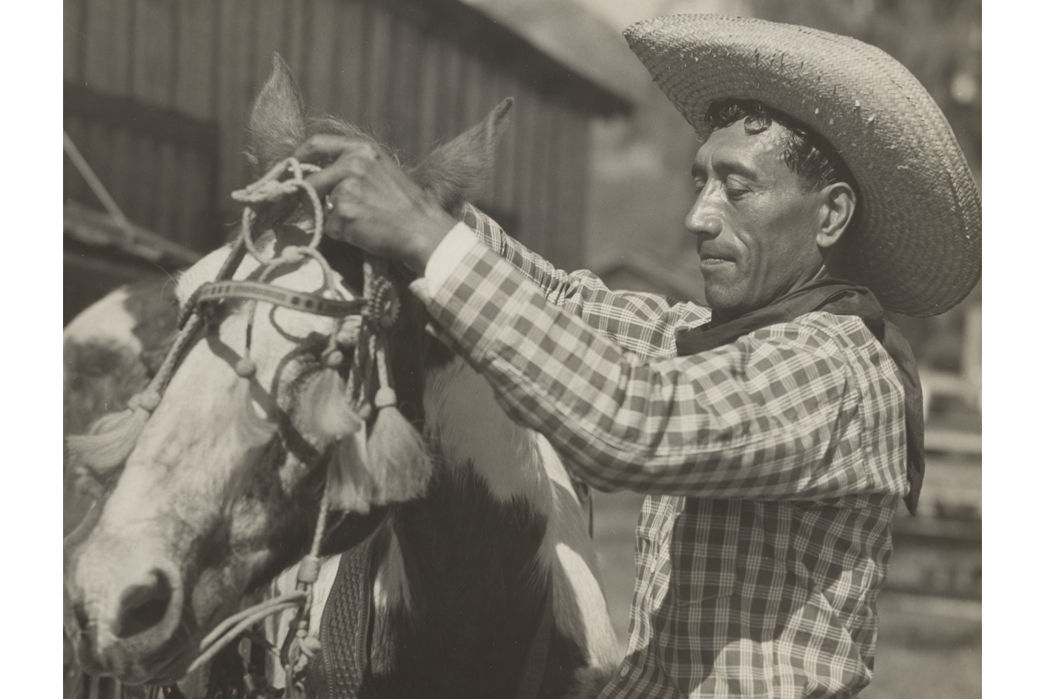
Paniolo David Kuloloia wears a palaka while readying his horse, 1930s. Image via National Park Service/Hawaii State Archives
It wasn’t just the sweet kind of agriculture that boomed in Hawaii. On the “Big Island” of Hawai’i (this spelling is recognized by most locals), lush valleys with seas of grass were prime cattle lands. The first cattle arrived in 1793 as a gift for King Kamehameha I.
The beef industry on the island grew and was especially attractive to Hispanic cowboys. No matter their origins, the island cowboys became known as paniolos in their tropical home, a Hawaiianized version of the word español.
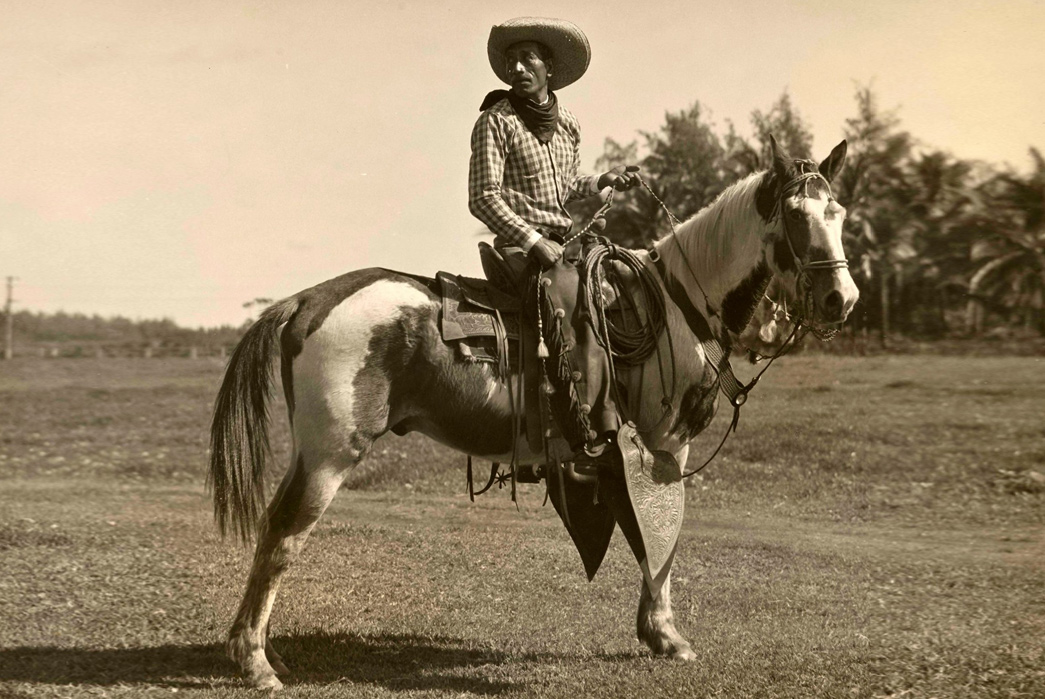
Mr. Kuloloia in the saddle. Image via Hawai’i State Archives.
Like their farming counterparts, the ranchers also adopted the “Hawaiian denim” en masse before World War II. The paniolo’s reputation spread far beyond the islands in the 20th century, which helped bring the palaka’s prominence back to the continental U.S. This was especially true after three Hawaiians scored top marks at the legendary Cheyenne Frontier Days rodeo in the state of Wyoming.
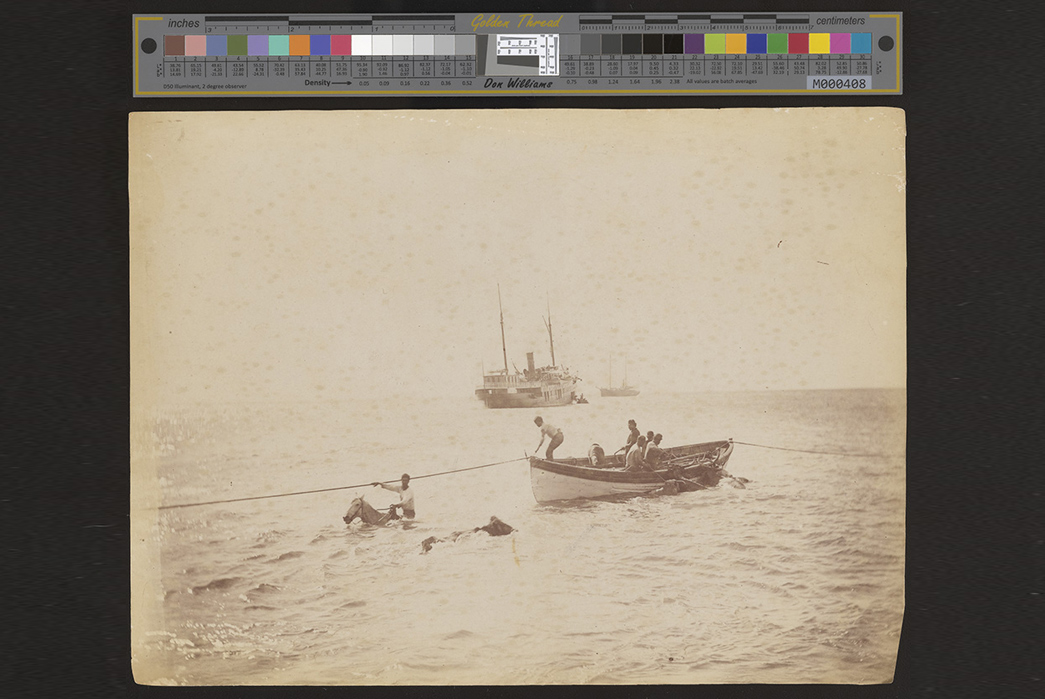
A common occurrence was herding livestock to be loaded on steamships from the surf! Image via Hawai’i State Archives.
The Aloha Spirit
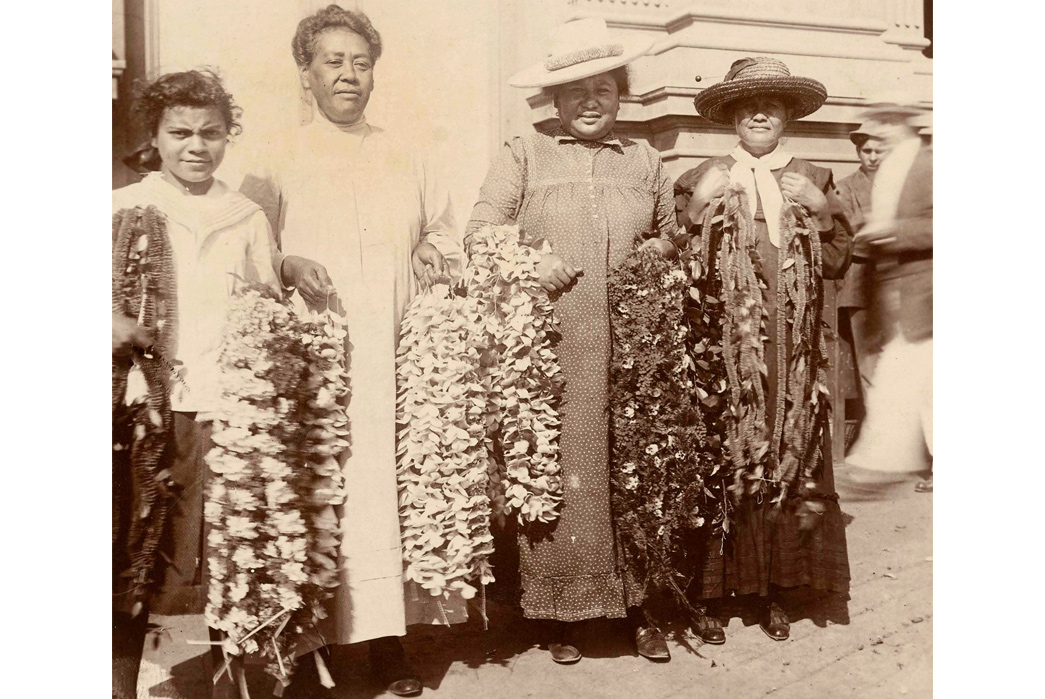
Lei sellers. Image via Hawai’i State Archives.
Fashion is cyclical. Palaka had found its way into every wardrobe in the Hawaiian islands before World War II. However, in the postwar era, the screen-printed aloha or Hawaiian shirt became a national symbol of statehood and American “leisure culture.” The tourism industry began its steady encroachment on old agricultural lands. While palakas saw a resurgence in the 1960s with the folk music revival, which was a nationwide phenomenon, they have been eclipsed by their short-sleeve counterparts.
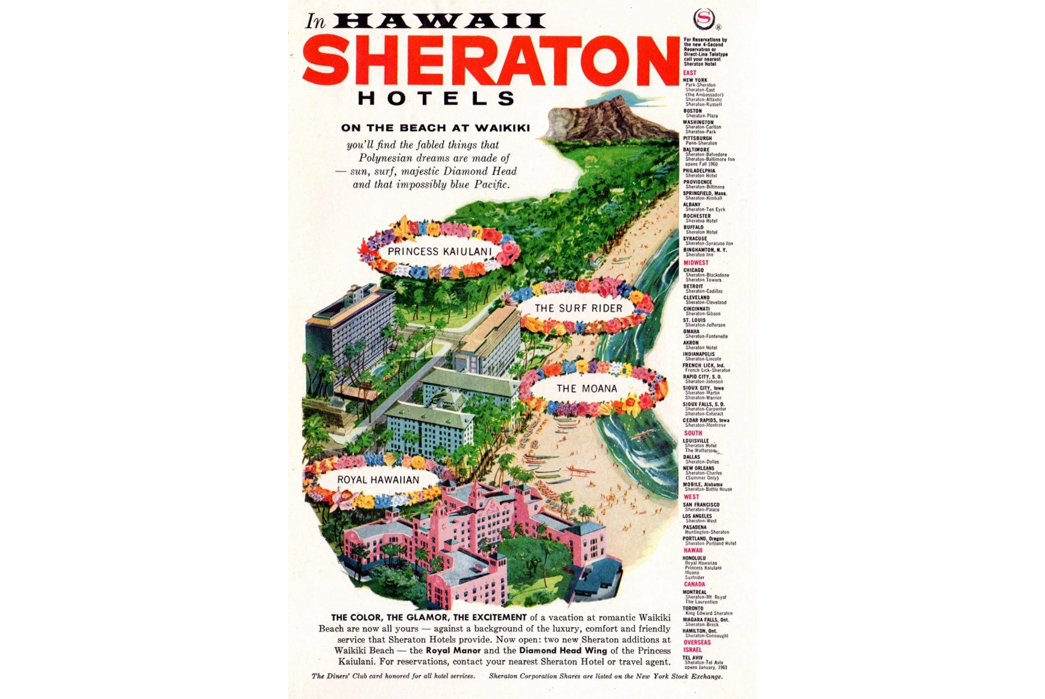
By the 1960s, tourism was a booming business. Image via Click Americana.
Finding the Palaka Today
Hawaii is a great setting to sit in the shade, drink a tropical rum concoction, and relax in some new threads. However, even if you’re across the world, there’s plenty of palaka that’ll come straight to your door. High-end Japanese brands have tapped the local heritage along with domestic makers.
Arakawa’s
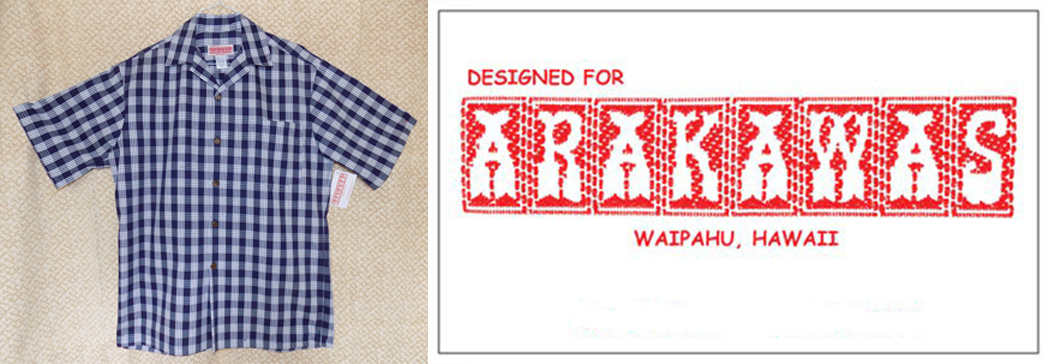
The classic palaka! Arakawa’s is an original maker that supplies the Kalakaua General Store with products proudly made in the Aloha State. Short-sleeved examples, like the one pictured above, are popular today but long-sleeve examples can still be found on the islands. Whichever sleeve length you prefer, several colors are also available.
Arakawa’s Navy Palaka is available from Kalakaua General Store for $75 USD.
Sun Surf
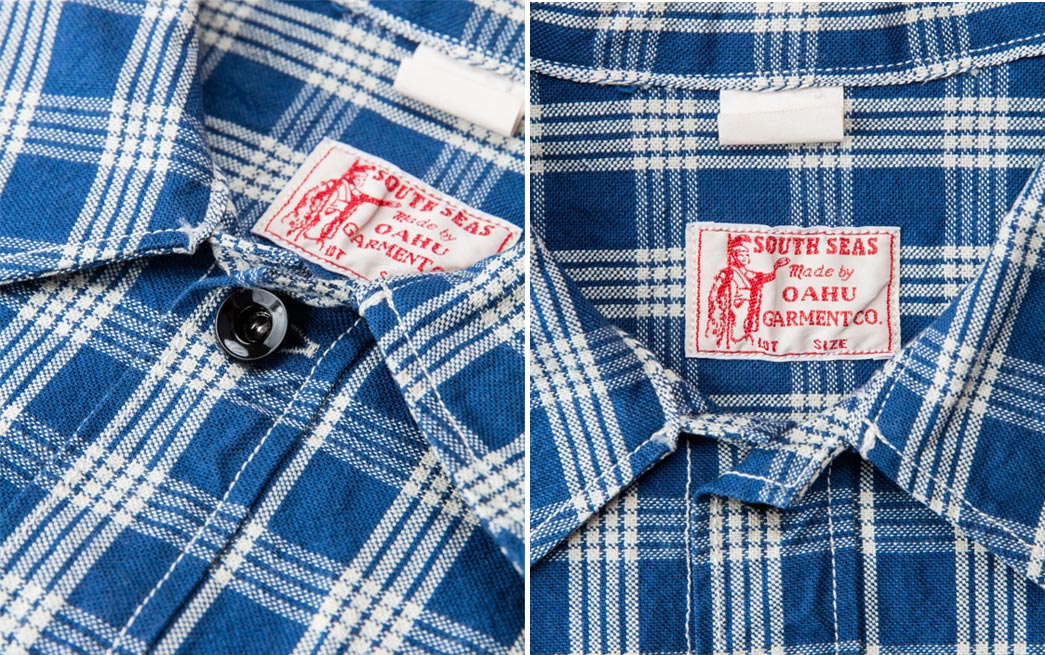
This rendition emphasizes palaka more as a fabric choice than strictly a shirt. In fact, the use of it as an outer garment is a distinctly Issei touch. It’s interesting to note that plaid and check cotton jackets of this cut were also sold commercially in the mainland U.S. starting in the nineteenth century. This classic Hawaiian garment would be a welcome addition to any denim-head’s wardrobe.
The Oahu Garment Co. Palaka Check Blouse is available from Second Sunrise for $342.
Sailor Moku Products Palaka Check Work Jacket
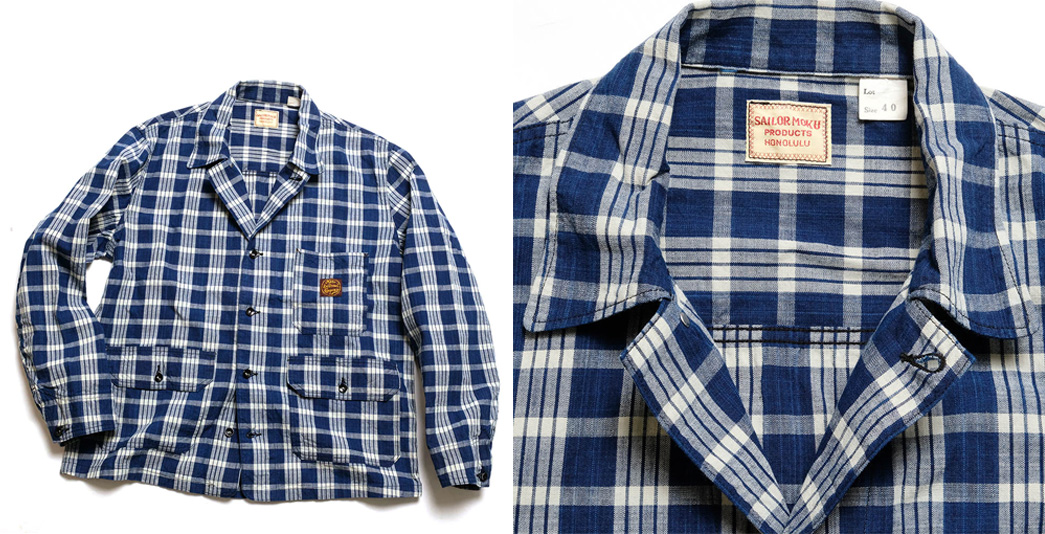
Oahu Garment Co. Palaka Check Blouse
Made in Japan, Sun Surf has revitalized a legendary Hawaiian brand. Sailor Moku was a Honolulu institution that started before World War II and at the height of blue-and-white popularity.
The Sailor Moku Products Palaka Check Work Jacket is available from Hinoya for $212.
Union Supply 10.25oz. Palaka Check Cap
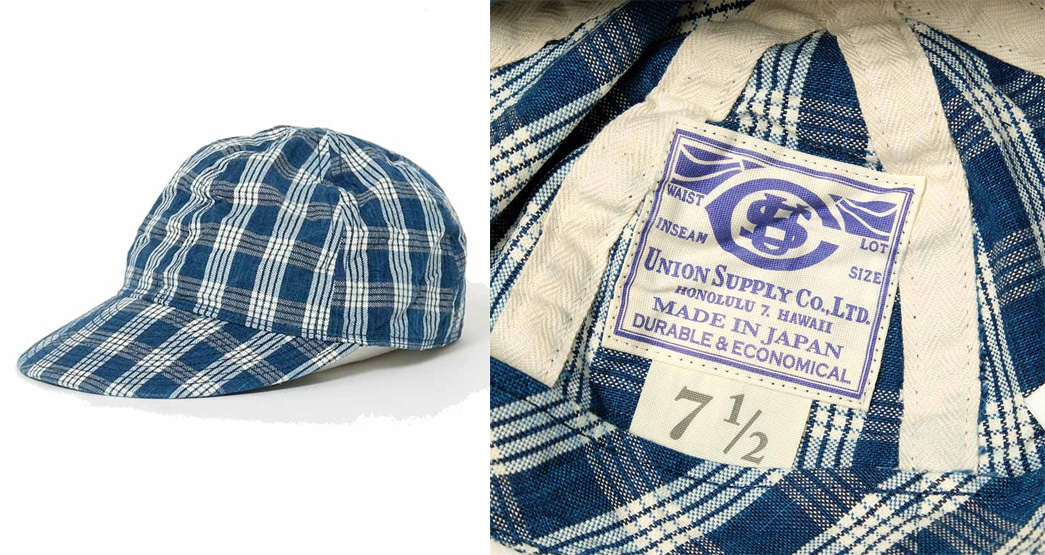
Sun Surf has made another compelling piece with this cap. Like the above example, the label was borrowed from a historic Hawaiian manufacturer. According to the product description, Union Supply made both military uniforms and workwear—a combination that serves as the inspiration for this piece.
The Union Supply 10.25oz. Palaka Check Cap is available from Hinoya for $64.

